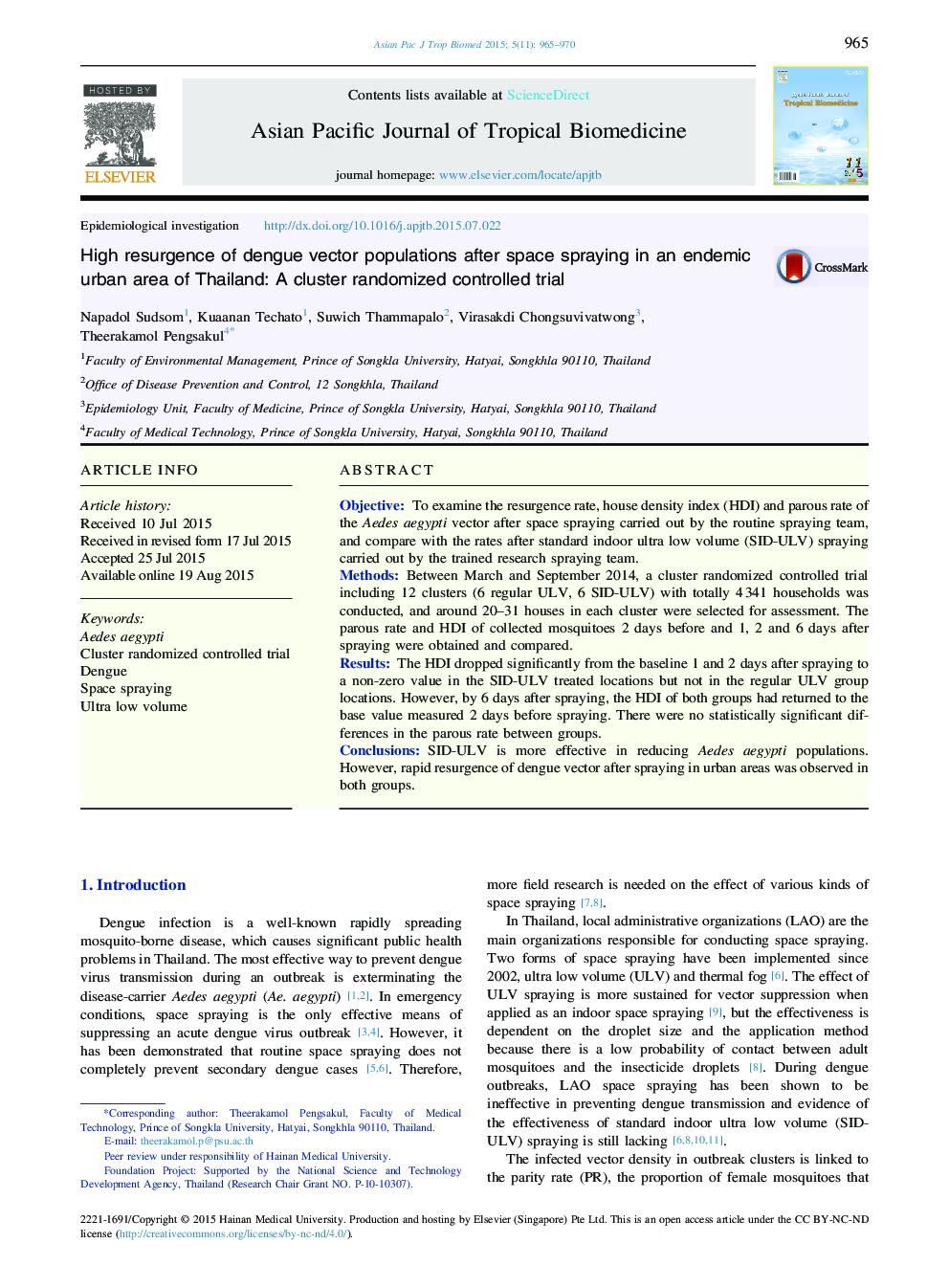| Article ID | Journal | Published Year | Pages | File Type |
|---|---|---|---|---|
| 2032395 | Asian Pacific Journal of Tropical Biomedicine | 2015 | 6 Pages |
ObjectiveTo examine the resurgence rate, house density index (HDI) and parous rate of the Aedes aegypti vector after space spraying carried out by the routine spraying team, and compare with the rates after standard indoor ultra low volume (SID-ULV) spraying carried out by the trained research spraying team.MethodsBetween March and September 2014, a cluster randomized controlled trial including 12 clusters (6 regular ULV, 6 SID-ULV) with totally 4 341 households was conducted, and around 20–31 houses in each cluster were selected for assessment. The parous rate and HDI of collected mosquitoes 2 days before and 1, 2 and 6 days after spraying were obtained and compared.ResultsThe HDI dropped significantly from the baseline 1 and 2 days after spraying to a non-zero value in the SID-ULV treated locations but not in the regular ULV group locations. However, by 6 days after spraying, the HDI of both groups had returned to the base value measured 2 days before spraying. There were no statistically significant differences in the parous rate between groups.ConclusionsSID-ULV is more effective in reducing Aedes aegypti populations. However, rapid resurgence of dengue vector after spraying in urban areas was observed in both groups.
